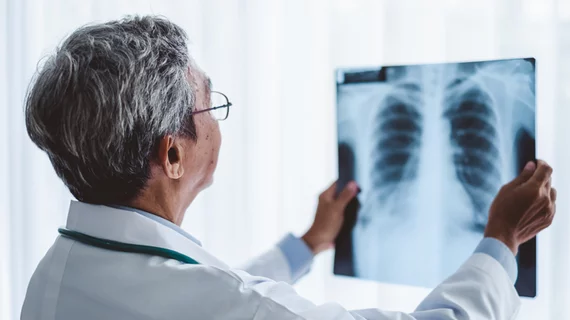If Clinically Indicated, Clinically Correlate
Radiologists are clinicians' consultants. We direct clinical management based on our expert interpretation of patient images. Yet, in many cases, radiology reports may not reflect our clinical expertise. Common problems include overuse of vague terminology and omission of the impression. Addressing these flaws can go a long way toward meeting clinicians' needs and improving patient care.
If you ask a clinician to name a radiologist's favorite phrase, it most definitely would be "clinically correlate." If you ask a clinician to name his or her least favorite phrase in a radiology report, it would be "clinically correlate."
This contentious phrase is one of many examples of vague radiology vernacular. Whether phrases like this one are just bad habits passed down from previous generations or methods to defer responsibility back to the referring clinicians, radiologists need to construct more meaningful reports that will ultimately help our clinicians and patients.
Consider the example of a 47-year-old female with a 3 cm low attenuation pancreatic tail mass with mild peripheral enhancement. The radiologist provides an impression: Pancreatic tail mass that may represent a pseudocyst, but also may represent malignancy. He or she recommends: Clinically correlate.
This widely used phrase does not add value to the radiology report. Clinicians satirize the expression. Not only does the phrase lack pertinent meaning, it does not save radiologists in litigation cases for poorly interpreted studies.
If a clinical correlation is required, it should be specific. For example, in the case of a presumed occult fracture, the radiologist should note, "correlate for point tenderness." If there is a suspected cerebellar mass, the report can suggest, "correlate for dizziness."
In the case of the pancreatic tail mass, how can a clinician "clinically correlate?" There are not many ways.
But what about the phrase "if clinically indicated?" Consider another example. An 88-year-old male with worsening metastatic colon cancer has an incidental small thyroid nodule on a staging CT. The radiologist's impression reads: Incidental low attenuation right thyroid nodule for which ultrasound can be done, if clinically indicated.
While this is a true statement, consider if it provides much additional value. Before using this vague phrase, ask yourself what it would mean to you if you were the clinician? This thyroid nodule is probably of little significance in an elderly patient with metastatic colon cancer. Clinicians may feel obligated to order additional imaging "if clinically indicated."
While there are cases in which this statement may apply, consider the clinical context and determine if it is relevant. The preferred dictation for the thyroid nodule is: Incidental low attenuation right thyroid nodule is noted that is of doubtful clinical significance given the metastatic disease. Unlike a report that includes "if clinically indicated," this dictation demonstrates the radiologist's expertise in image interpretation and patient management.
Radiologists need to include impressions in reports, not vague terms like 'clinically correlate'
The radiologist's impression is the most important component of the radiology report. Yet, a significant number of radiologists forgo an impression. In a recent study, 94 percent of 703 polled clinicians believe that a radiology report greater than a few lines should have a separate conclusion.
Not only is an impression necessary, it should be concise and relevant, should not reiterate the findings and should answer the clinical question. Even when the provided clinical history is simply "evaluate PICC placement," an appropriate impression is "satisfactory PICC placement."
If radiologists want to be accepted as clinical colleagues, we must take ownership—this is our patient, too! Do not rest everything on the clinician.
Let us abandon the vague and ridiculed terminology and rather compose meaningful radiology reports that will help our referring clinicians and patients. This approach builds our status as valued clinical consultants.
About the author: Mark Mamlouk, MD, is a volunteer assistant clinical professor of neuroradiology at the University of California, San Francisco. He currently works at Kaiser Permanente in Santa Clara, but still maintains a volunteer assistant professor role with UCSF, where he teaches trainees, participates in research studies, leads multi-disciplinary conferences, and practices neuroradiology.
